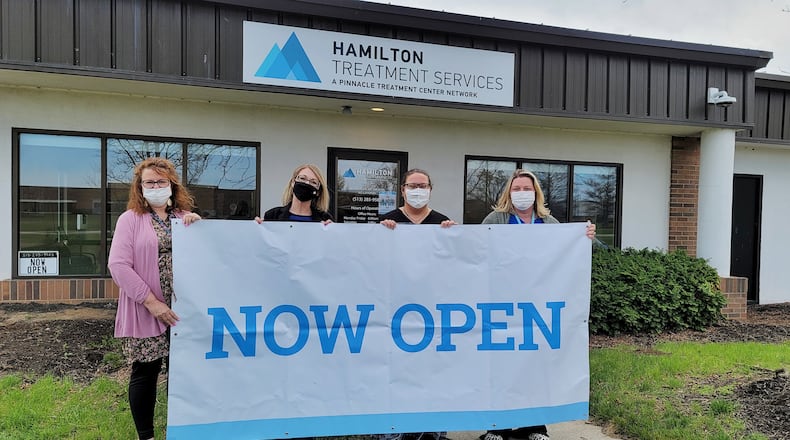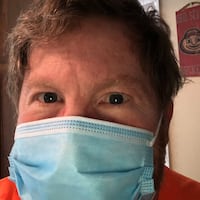And when they’re receiving methadone or other medications that help with their addictions, they have to make that trip six days a week, he said.
“We had I think it was around 45 patients that were doing that, and over the course of a couple years we’ve been open, we’ve had several patients who would start and just not be able to make the drive, didn’t have transportation,” he said. “When you see that, you see that there’s a need, and people want to access care, but they just didn’t have access to the care, with medication-assisted treatment, especially methadone.”
The Hamilton facility, located at 8500 Bilstein Blvd., is Pinnacle’s 18th outpatient opioid treatment center in Ohio, plus a detoxification unit in Ravenna, a residential treatment center in Columbus and intensive outpatient programs with recovery homes in Columbus.
Ohio at or near opioids’ Ground Zero
Butler County in 2020 had 177 fatal overdose deaths that came through the office of the coroner, Dr. Lisa K. Mannix. Of those, 155 (almost 88 percent) involved opioids, “overwhelmingly fentanyl,” said spokesman Martin Schneider.
For Butler County, 2020′s overdoses totaled the fourth-worst year of the nine years since Jan. 1, 2012. It was behind 2017′s high of 232 deaths, and also lagged 2016 and 2016.
But Byers, of Pinnacle, believes the danger of addiction is camouflaged by Narcan, which revives people from overdoses.
Pinnacle’s Hamilton facility is an outpatient treatment center that will offer methadone and other medications to help with addictions, such as suboxone and vivitrol. Such help with withdrawal symptoms and cravings, or they can block the effects of opioids. Some drugs can do both.
“We offer all three (types of) medications for one reason — because we want to do what’s right for each individual patient,” Byers said.
Methadone, which has been researched 50 years, “is still the gold standard,” Byers said. “When they take the medication, when they’re in treatment, it works.”
“The stat that’s out there, that floats around, is somewhere in the mid-80s — 80 percent of the people who come in to medication-assisted treatment in six months will be opiate free,” he said. “They’ll be on methodone, or they’ll be on buprenorphine, but they won’t be using illicit opiates, six months later.”
Dr. Quinton Moss, whose Modern Psychiatry & Wellness received praise from recovering addicts before Hamilton officials granted permission for one of his treatment centers to relocate, said the need remains great for addicted people to get help. locally. Modern Psychiatry also offers medication-assisted treatment.
“There is still an ongoing need for people with addiction to receive treatment,” Moss said. “And we should, as a community, offer a variety of avenues and ways of access and types of treatment, so that people can get customized care.”
Great needs for alcohol and opioid treatment
One need that has grown during the past year of coronavirus isolation, Moss said, is treatment for alcoholism Moss said: “We’ve had an increase in the number of people who are struggling with alcohol during the pandemic, and we’re starting to see that in people coming to the practice, and are putting together treatment plans for them.”
Moss said Butler County has another big need in battling opioid addictions.
“The community really needs an inpatient treatment program, where people with Medicaid, or who are indigent can receive care,” he said. “That’s what the community really needs.”
Here’s how that would work: “It would be somewhere that’s similar to a hospital setting that has the ability to treat someone probably up to 10-14 days, just to be able to get them medically stable with their addiction,” Moss said. “These are the folks that it would be unsafe for them to stop drinking at home, even with treatment. Or people who need treatment for their opioid-abuse disorder, but they have medical issues, which if they tried to do it in an outpatient setting, it may not be safe.”
“Or,” Moss said, “people whose living environment itself is so unsafe that it prevents them from being able to detox. The community really needs a setting like that.”
About the Author

